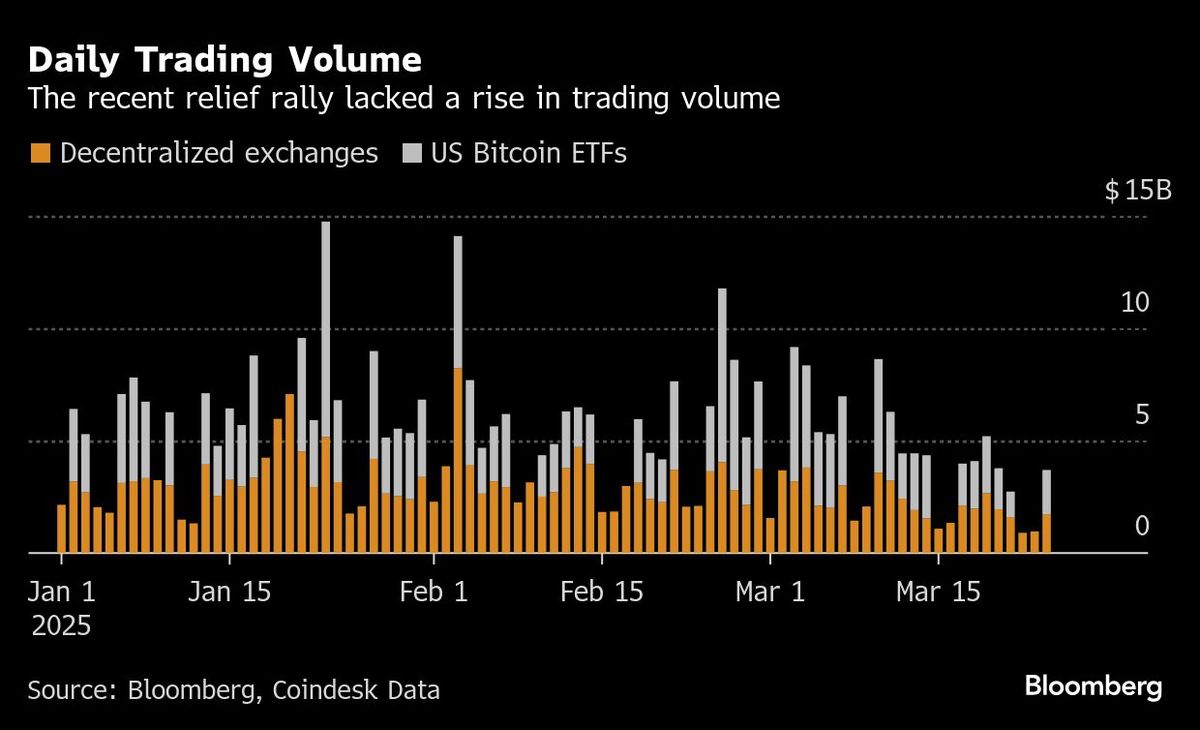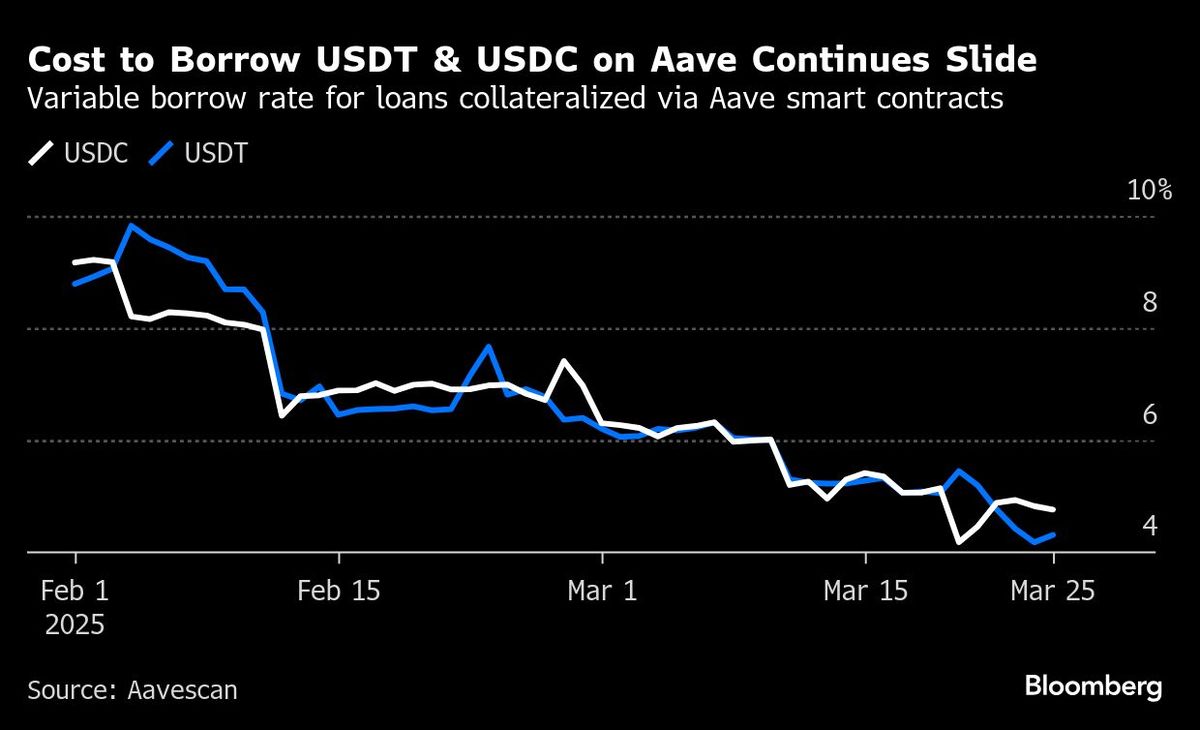
(March 26): Bitcoin’s recent relief rally, which took the original cryptocurrency to a two-week high on Monday, is at risk of being short-lived as broader market uncertainty continues to keep investors on the sidelines.
A lack of bullish momentum, low volumes and ongoing macro tensions are combining to create the conditions for what some traders say is a potential “bull trap” in a directionless market. Market experts point to macro-economic risks, including potential tariff escalations, inflation concerns, and geopolitical instability, which continue to cast a shadow over bitcoin’s price action.
“It’s important for investors to be cautious in this environment: The market remains fragile and can be easily manipulated,” said Kirill Kretov, a trading automation expert at CoinPanel. “Retail activity is low, volume is thin, and even the so-called ‘smart money’ is staying on the sidelines. The players with the real ability to move the market are not doing so — and for good reason.”
Throughout March, bitcoin has fluctuated between about US$76,000 and US$95,000. Yet without a clear catalyst to push the price beyond these levels, the market has struggled to gain sustained bullish traction.
One indicator of cautious sentiment is the bitcoin funding rate, which reflects the difference in prices between the spot and futures markets. In bullish markets, futures prices are above spot prices, so the funding rate is positive. Despite bitcoin’s price climbing more than 4% to US$88,786 on Monday, its funding rate turned negative, according to data from CryptoQuant. That’s a sign that traders are no longer willing to pay a premium to open new long positions in the token’s perpetual futures market.
These futures contracts, which have no set expiry, are often used by speculators looking to profit from short-term price fluctuations. A negative funding rate suggests a shift in sentiment and a moderation in leverage demand.
In another sign of a lack of conviction in the market, the cost of borrowing stablecoins such as Tether’s USDT and Circle’s USDC on decentralised lending platform Aave has dropped to around 4%, reflecting the risk-off sentiment among investors that has spilled into the crypto sector.
“On Aave, lending rates are impacted by utilisation rates of deposited assets,” said Strahinja Savic, the head of data and analytics at FRNT Financial. “As appetite diminishes for leverage, and other trading strategies that require borrowing, the lending rates on Aave fall.”
Moreover, seasoned bitcoin holders from previous market cycles are still holding their positions, hoping for higher exit prices. This, according to Kretov, creates what he calls “dead weight” in the market, making it more susceptible to volatility. While volatility can flush out overleveraged retail traders, Kretov believes that a true market washout, where even long-term holders capitulate, is necessary to provide large investors with a “clean slate” for new positions.
“Until that happens, relief rallies are dangerous,” he said. “They can suck in impatient longs only to reverse violently — classic bull traps in a low-liquidity environment.”
For clarity on the market’s direction, all eyes are now on US President Donald Trump’s plans to put more tariffs in place on April 2, according to Augustine Fan, a partner of SignalPlus, a cryptocurrency derivatives software provider.
“We expect markets to continue their soft rebound into month-end, with the next major catalyst being the ‘Liberation Day’ tariff announcement,” he said.
Uploaded by Tham Yek Lee
- World Economic Forum highlights EPF as model for sustainable retirement reform
- Li Ka-shing's CK Hutchison mulls global telco assets spin-off, eyes London listing, Reuters reports
- U Mobile secures MCMC award, gears up for nationwide 5G roll-out
- Indonesians feeling market gloom ahead of major holiday
- MetMalaysia can issue quake warnings within eight minutes, says DG
- Indonesian Muslims to celebrate Eid on Monday
- Myanmar hit by fresh 5.1 aftershock, tremors felt in neighbouring countries
- Myanmar's quake toll passes 1,000 as foreign rescue teams arrive
- Trump pressing advisers for tariff escalation ahead of April 2, Washington Post reports
- MetMalaysia can issue quake warnings within eight minutes, says DG



